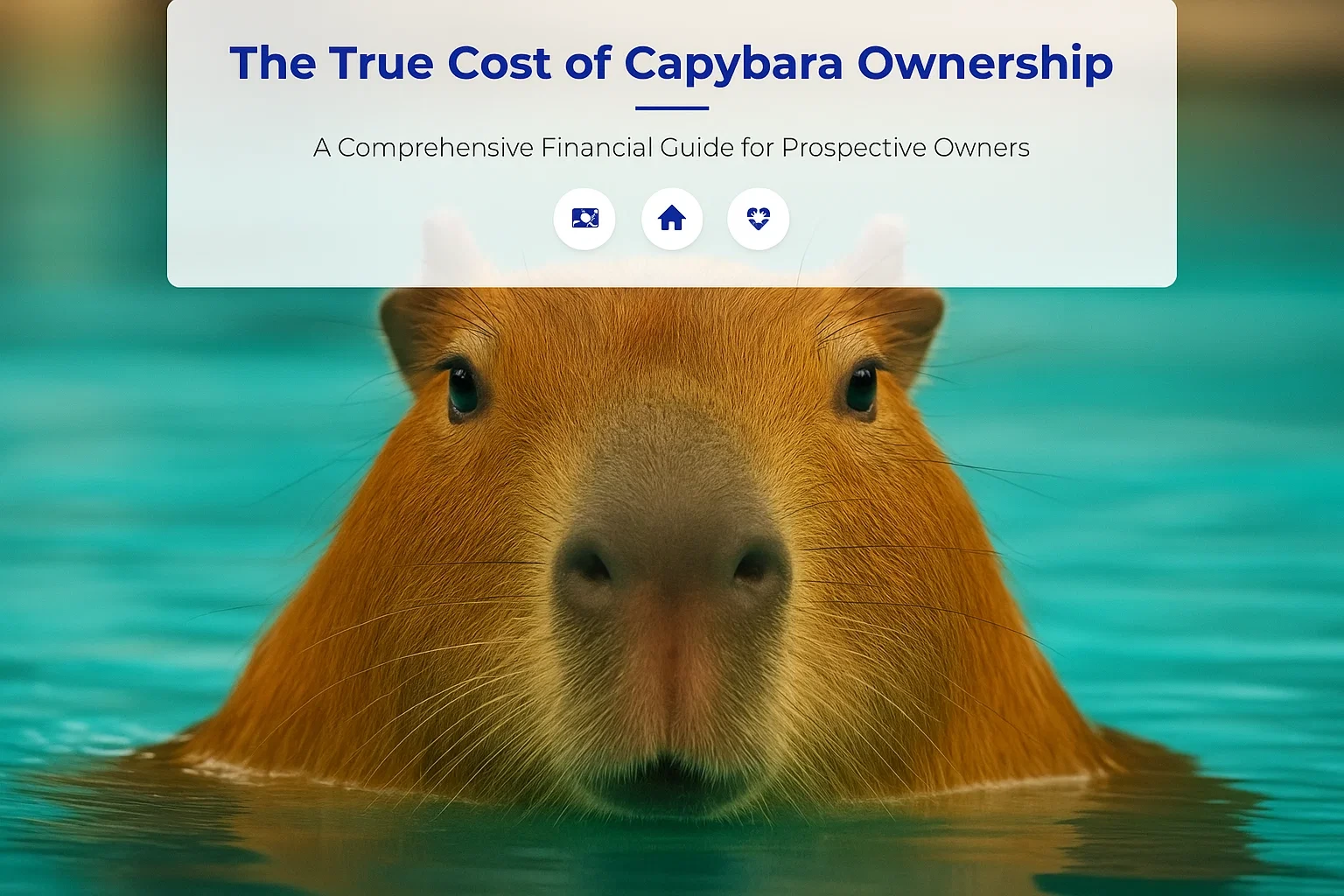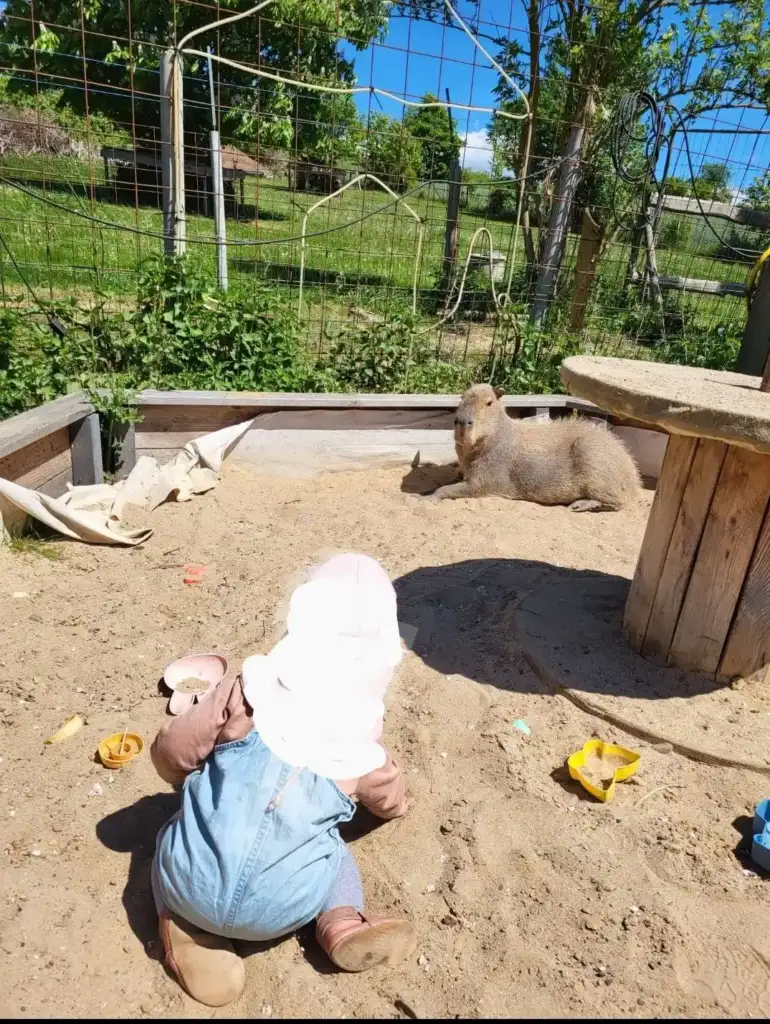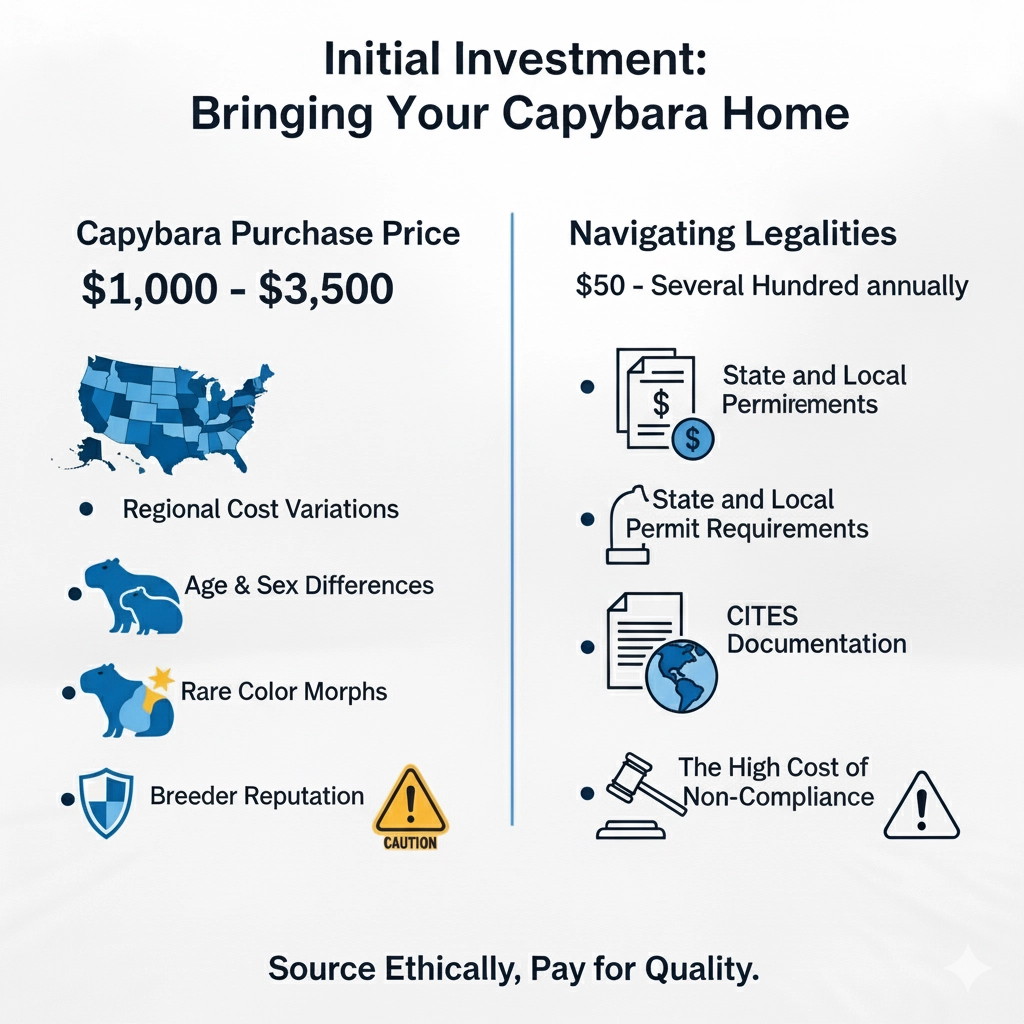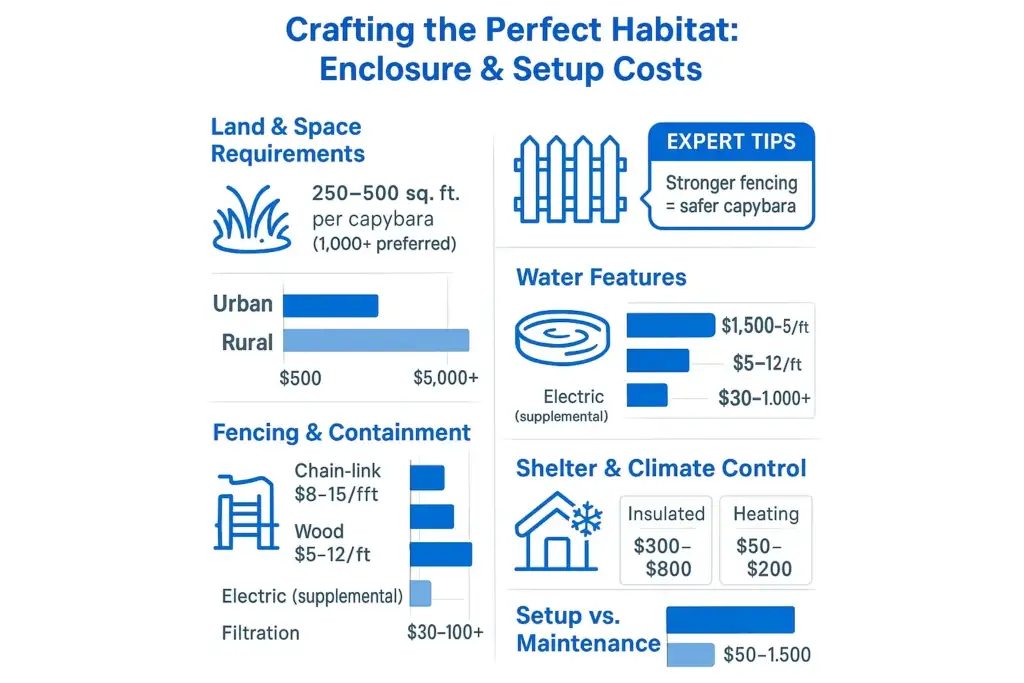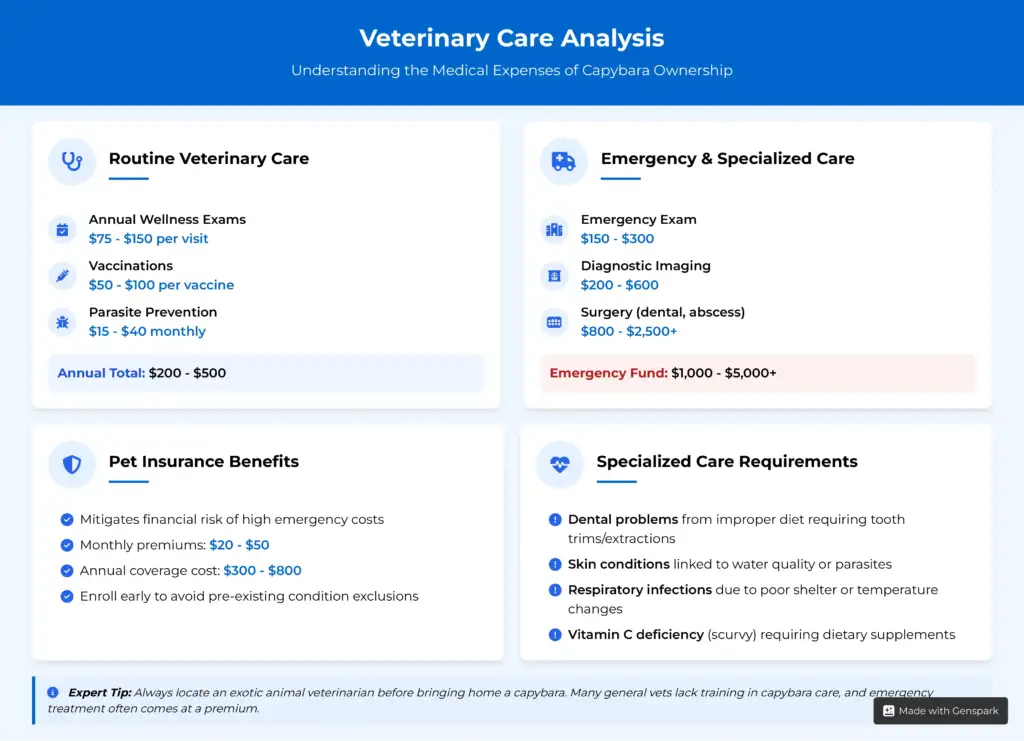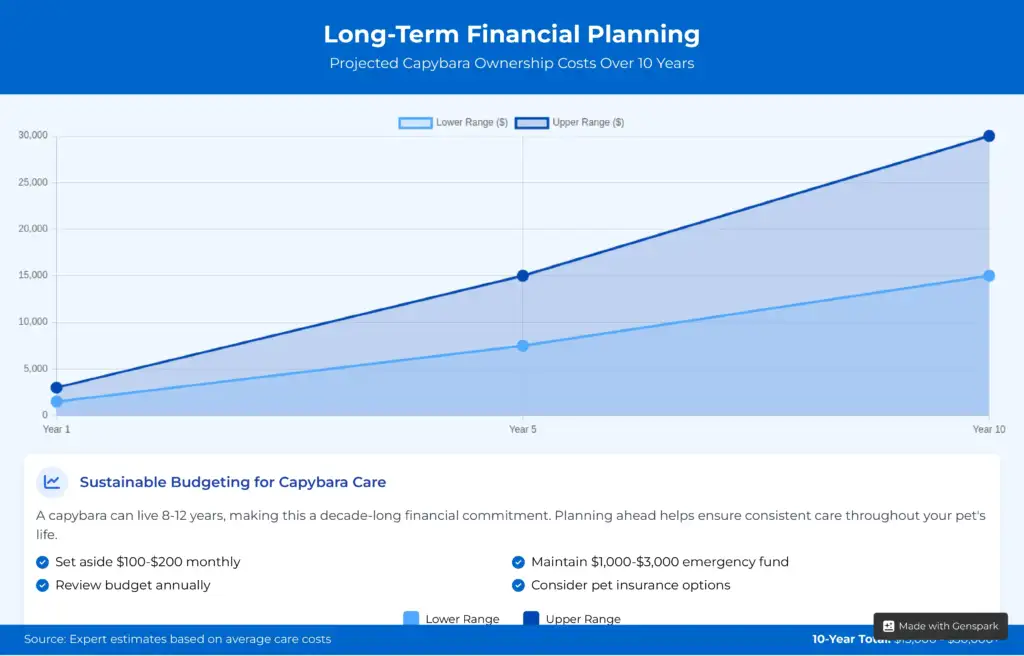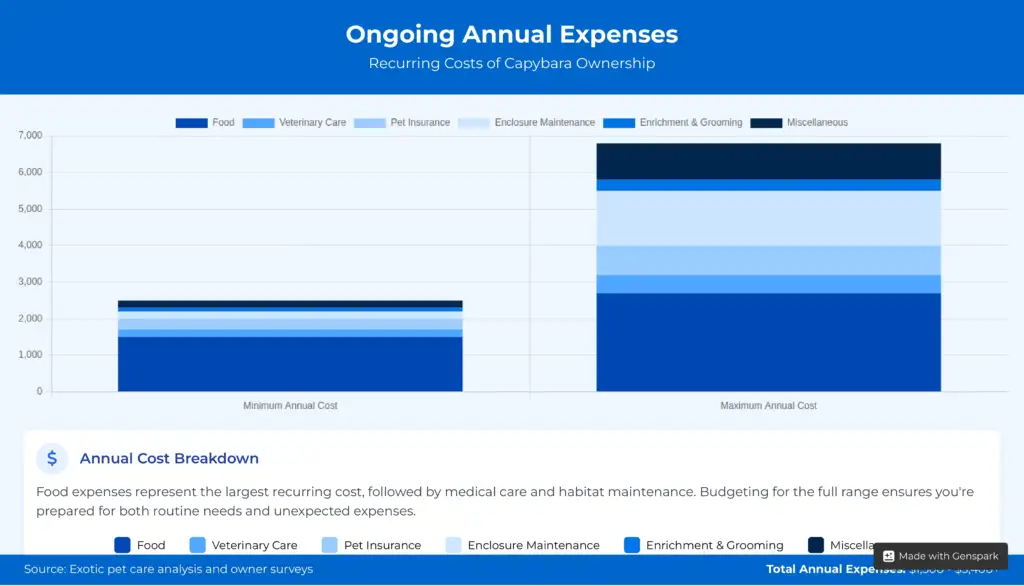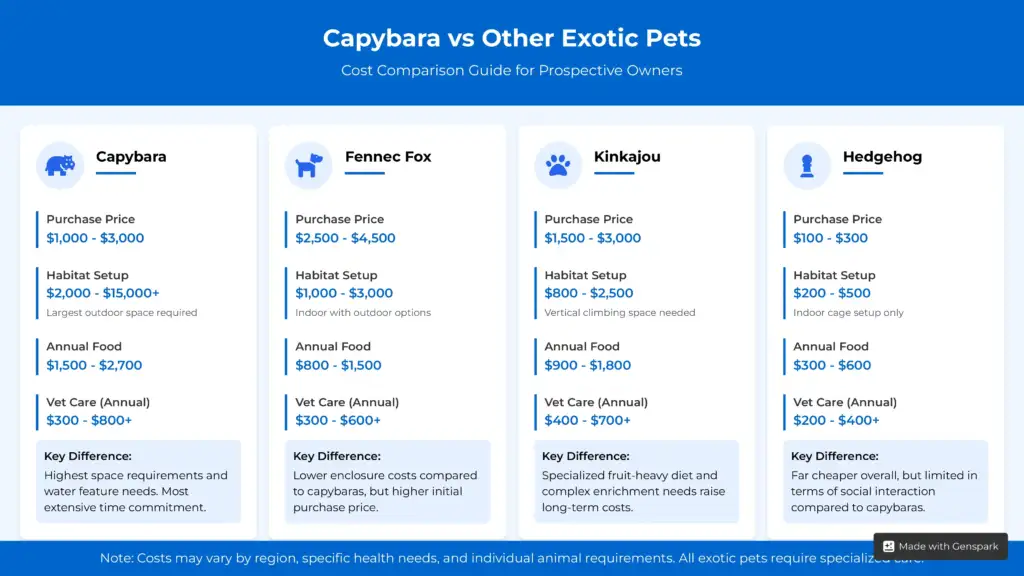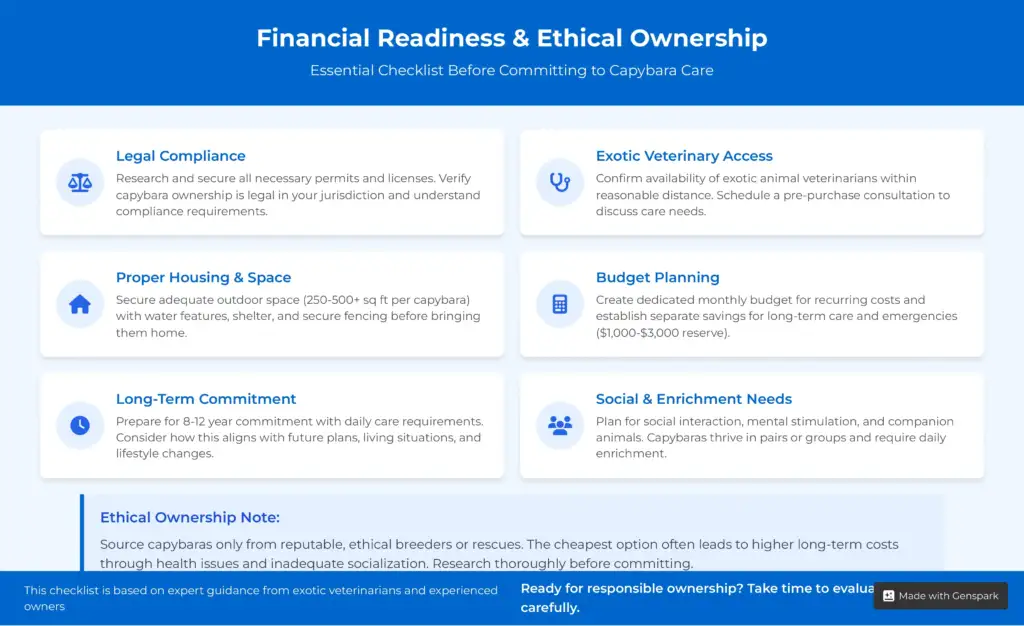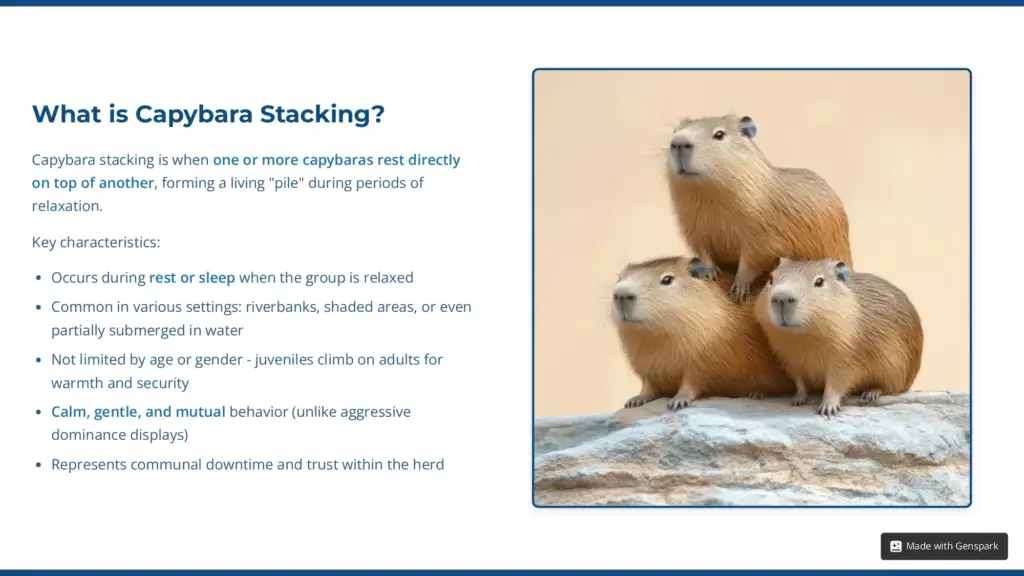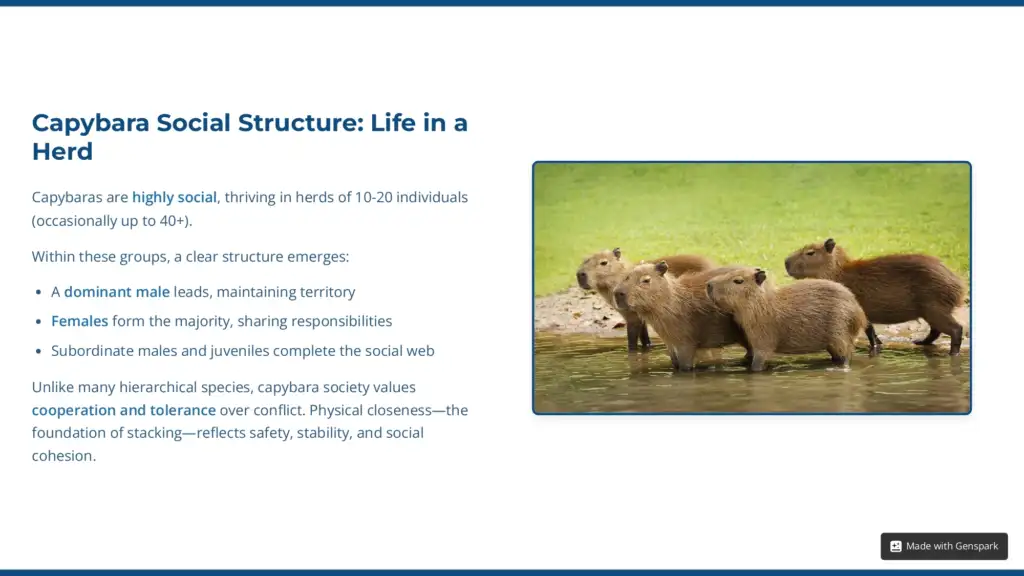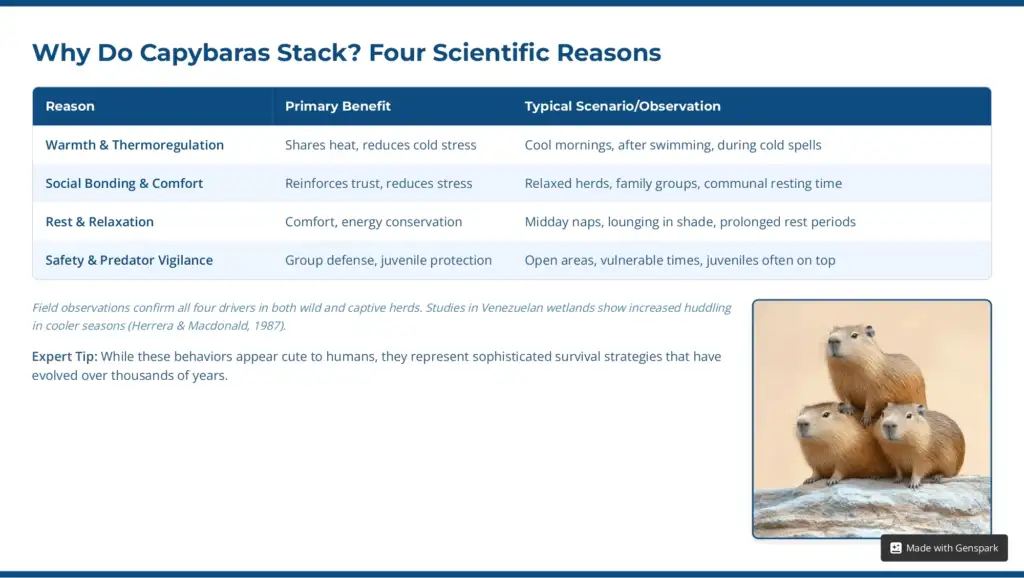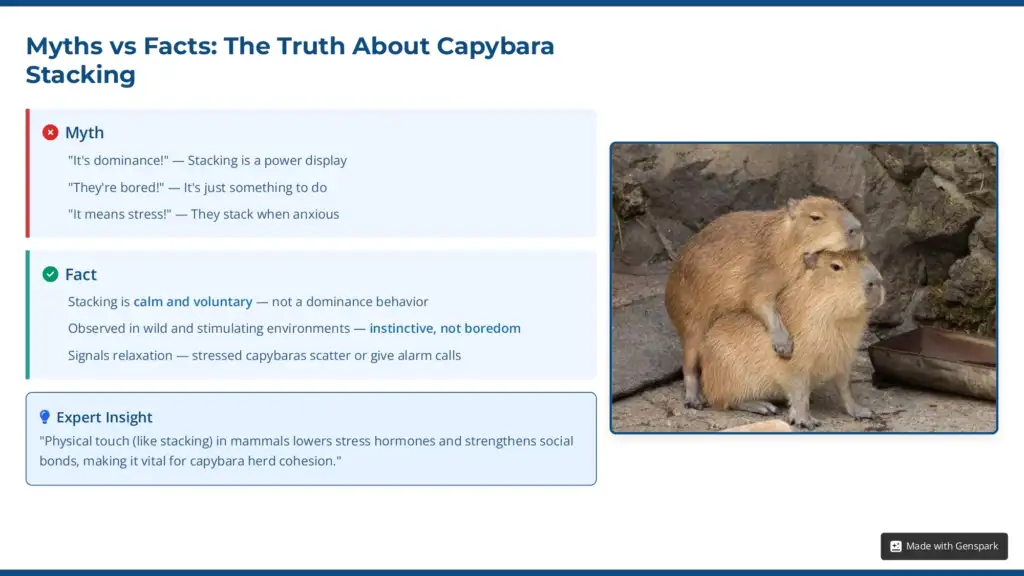Introduction: The Capybara’s Florida Enigma
Imagine this: you spot a capybara, Florida’s friendly giant rodent, lounging by a canal or nibbling on grass near a wetland. It seems a bit odd, almost like a scene from a funny meme. How did this creature, which hails from South America, end up in Florida? For many locals and visitors, seeing a capybara sparks a blend of curiosity, surprise, and sometimes a little concern.
The mystery deepens: Are these friendly giants legal to own? What should you do if you stumble upon one? Could they pose a risk to local ecosystems? Capybaras may be charming, but their presence raises real questions about wildlife management, pet ownership, and ecological balance.
This guide is your go-to source for everything you need to know about capybaras in Florida. You’ll discover where they come from, the laws around owning them, their role in the ecosystem, and tips for interacting with them safely. Whether you love wildlife, are just curious, or are thinking about getting one as a pet, this guide will help you understand these amazing creatures in a responsible way.
Where Did Capybaras Come From? A Brief History of Florida
Understanding the Unexpected Residents
Capybaras are the largest rodents in the world and originally come from South America. They love living in wet areas like swamps, riverbanks, and tropical forests, especially from Brazil to Venezuela. They are well-suited to warm weather and places with plenty of water, which is surprisingly similar to Florida’s environment.
However, seeing one in Florida can be quite a surprise. These friendly and social animals aren’t originally from the state, which makes their presence interesting and, for many locals, a topic of curiosity.
Pathways to Florida’s Ecosystem
Escaped Exotic Pets: The leading explanation for capybaras in Florida is human-mediated introductions. Many were once exotic pets, kept by hobbyists or private owners, who either lost them or released them intentionally. Even some escapes can give rise to local populations over time, particularly in areas with suitable wetlands.
Accidental Introductions and Intentional Releases: While less common, some capybaras may have been released intentionally, or arrived through other accidental pathways. Regardless of how they arrived, the result has been the establishment of small, often isolated colonies.
Case Studies of Local Populations
Certain areas in Florida have documented recurring capybara sightings:
- Gainesville: Reports suggest a small, stable population inhabiting canals and wetlands near residential areas. Residents often share photos and videos, sparking local curiosity.
- Ocala: Occasional sightings in rural water bodies indicate that capybaras can adapt quietly to new habitats, foraging alongside native wildlife without immediate conflict.
These examples highlight how resilient and adaptable capybaras can be, while also showing the need for awareness and responsible coexistence.
Factors Supporting Establishment
Several factors make Florida particularly hospitable to capybaras:
- Climate & Habitat: Warm temperatures and plentiful wetlands mirror their native South American environment.
- Food Availability: Abundant grasses, aquatic plants, and shrubs provide year-round nourishment.
- Predator Scarcity: In many areas, natural predators are minimal, allowing populations to establish more easily.
Expert Tip: Understanding the ecological impact of capybaras is essential. As non-native species, they can influence local vegetation and wildlife dynamics. Being informed helps residents and wildlife enthusiasts interact responsibly and safely.
Spotting Capybaras in the Wild: Habitats & Best Practices
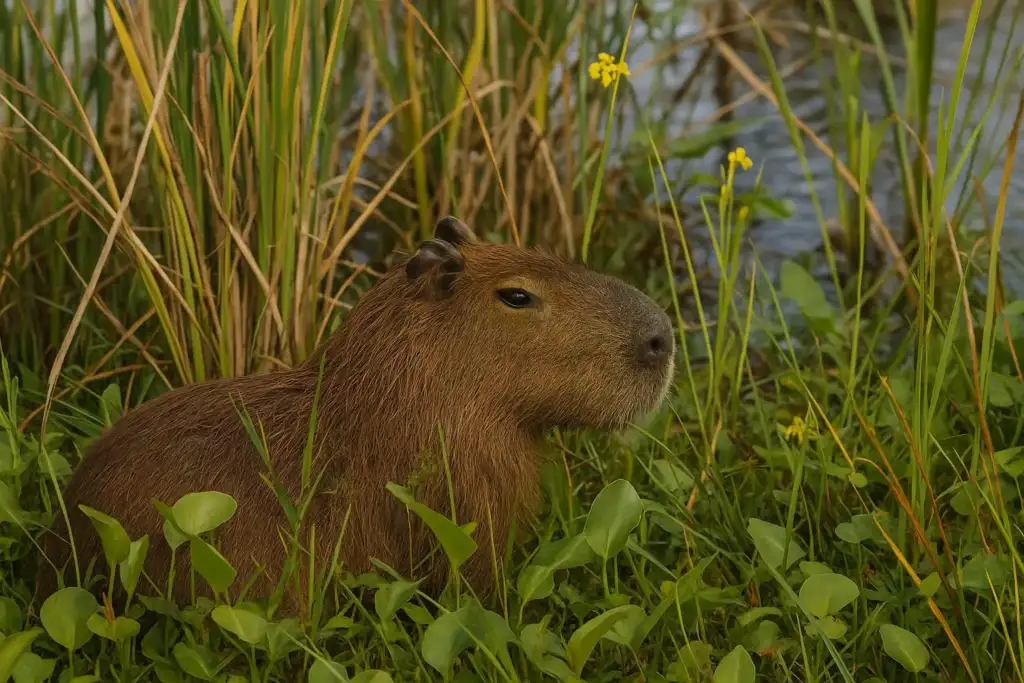
Identifying Capybara Habitats in Florida
Capybaras in Florida have adapted remarkably well to the state’s wetlands and freshwater systems. Understanding where to look—and how to interact responsibly—is key for curious wildlife enthusiasts.
Preferred Habitats:
- Freshwater Bodies: Lakes, rivers, ponds, and slow-moving streams are prime areas where capybaras graze and bathe.
- Dense vegetation, including tall grasses, reeds, and shrubs, provides cover for resting and grazing, helping them stay hidden from potential threats.
- Reported Regions: While sightings occur across the state, capybaras are most often spotted near the Everglades, freshwater marshes, canals, retention ponds, and even water-adjacent golf courses.
Interactive Observation Tip:
Conceptually, an interactive map of general sighting areas could help enthusiasts satisfy their curiosity without revealing exact locations, reducing the risk of human disturbance or wildlife harassment.
Ethical Wildlife Observation Guidelines
Observing capybaras can be a magical experience, but it comes with responsibilities. Experts recommend:
- Always Observe from a Distance: Maintain at least 50–100 feet between you and wild capybaras. Close approaches can stress them or provoke defensive behavior.
- Use Binoculars or Telephoto Lenses: This allows safe, up-close views without interference.
- Stay Quiet and Calm: Avoid sudden movements or loud noises that could startle them.
- Respect Property Boundaries: Stick to public lands or designated wildlife areas.
Never Feed Wild Capybaras: Feeding may seem harmless, but it habituates them to humans, creates dependency, and can lead to aggressive or risky behavior. In Florida, feeding wildlife is often illegal and can disrupt local ecosystems.
Best Times for Sightings
Capybaras are crepuscular by nature, meaning they are most active during dawn and dusk. Warm, sunny days also provide opportunities to spot them basking near water. Observing at these times increases the chances of sightings while minimizing disturbance.
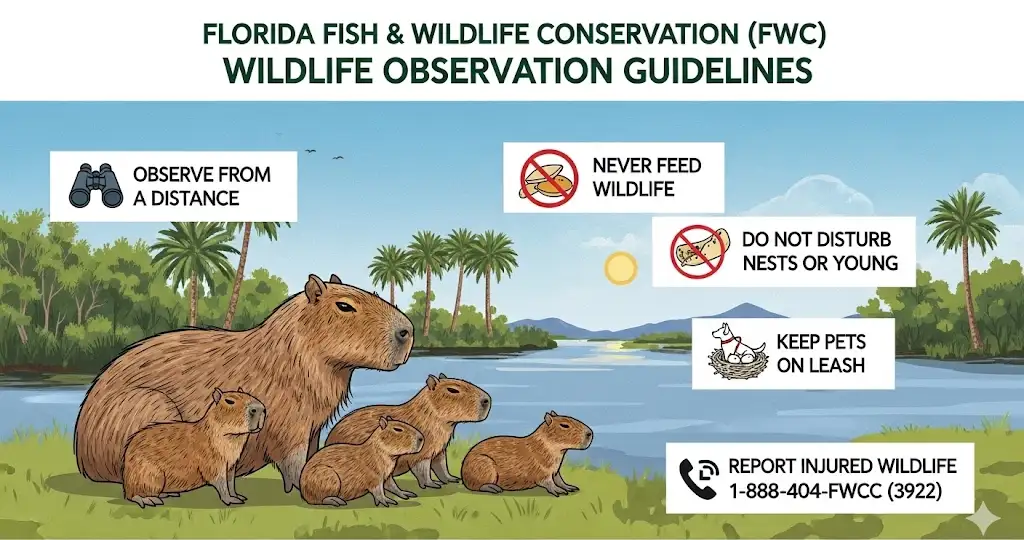
The Law of the Land: Can You Own a Capybara in Florida?
Introduction to Florida’s Exotic Pet Regulations
Owning an exotic animal in Florida isn’t as simple as bringing a puppy home. The Florida Fish and Wildlife Conservation Commission (FWC) regulates non-native species to protect public safety, native ecosystems, and the animals themselves. Their licensing system ensures that only experienced and responsible individuals can care for exotic wildlife, including capybaras.
Capybaras and FWC Classification
Capybaras are classified as Class III wildlife by the FWC. This classification means they cannot be owned without a permit, and potential owners must meet strict standards for care, housing, and public safety.
Detailed Breakdown of Permit Requirements
For anyone considering capybara ownership, understanding FWC regulations is crucial. Here’s what you need to know:
1. Permit Type:
- Class III Wildlife Permit – required for possession, exhibition, or sale.
2. Application Process:
- Submission of FWC Form 68A-6.002
- Fees and facility inspection
- Background checks to ensure responsible ownership
3. Enclosure Standards:
- Minimum dimensions and secure fencing (e.g., double-door entry systems)
- Suitable substrates and shelters
- Access to swimming water
- Measures to prevent escape and protect animals from extreme weather
4. Care & Husbandry:
- Proper diet, social enrichment, and veterinary care
- Clean water and temperature regulation
- Attention to social needs—capybaras are highly social animals
5. Proof of Experience:
- Demonstrated at least one year of substantial experience caring for capybaras or similar exotic animals
6. Contingency Planning:
- Emergency plans for escape, illness, or natural disasters
7. Public Safety Responsibilities:
- Preventing escapes
- Secure containment to avoid injury to the public
- Record-keeping and reporting as required
Expert Tip: Before considering a capybara as a pet, thoroughly research the FWC permitting requirements. Regulations can change, and owning a Class III wildlife animal carries serious responsibilities. Always consult the official FWC website for the most current information: FWC Exotic Pet Regulations.
Key Legal Requirements for Capybara Ownership in Florida
| Requirement Category | Specific FWC Regulation | Permit Class | Notes / Considerations |
| Permit Type | Class III Wildlife Permit | Class III | Required for possession, exhibition, or sale |
| Application Process | FWC Form 68A-6.002 | N/A | Requires application, fees, background check, and facility inspection |
| Enclosure Standards | FWC Rule 68A-6.0022 | N/A | Minimum size, security features (e.g., double-door entry), suitable substrate, access to water for swimming. Must prevent escape and protect from elements |
| Care & Husbandry | FWC Rule 68A-6.003 | N/A | Minimum size, security features (e.g., double-door entry), suitable substrate, and access to water for swimming. Must prevent escape and protect from elements |
| Experience | FWC Rule 68A-6.002 | N/A | Proof of at least one year of substantial experience in the care, feeding, and handling of capybaras or similar exotic animals |
| Contingency Plan | FWC Rule 68A-6.002 | N/A | Emergency plan for escape, illness, or natural disaster |
| Public Safety | FWC Rule 68A-6.002 | N/A | Proper diet, clean water, regular veterinary care, social enrichment, and temperature regulation |
Capybara Behavior & Biology: Understanding Florida’s Largest Rodent
Physical Characteristics
Capybaras are hard to miss. As the world’s largest rodent, adults typically weigh between 77–146 pounds (35–66 kg) and can reach up to 4 feet in length. Their size alone is impressive, but it’s their unique adaptations that make them truly remarkable:
- Webbed feet: Aid in swimming and navigating wetlands.
- Sparse, coarse fur: Helps with thermoregulation and drying quickly after water excursions.
- High-set eyes, ears, and nostrils: Allow them to see and breathe while mostly submerged.

Natural Behavior & Social Structure
Capybaras are highly social, living in groups of 10–20 individuals, sometimes larger in areas with abundant resources. Their social structure helps them detect predators and maintain group cohesion. Key behavioral traits include:
- Semi-aquatic lifestyle: Water is central to their survival—for thermoregulation, predator avoidance, and mating.
- Diurnal and crepuscular activity: Most active during dawn and dusk, although they may forage during the day in safe, undisturbed areas.
- Vocalization: Communicate using barks, purrs, clicks, and whistles, each serving different social functions.
Diet and Foraging
Capybaras are herbivores, primarily grazing on grasses and aquatic plants. In Florida, their feeding behavior can impact local vegetation, especially in areas where they establish non-native populations. They are selective grazers but can adapt to various plant resources available in wetlands, canals, and other freshwater habitats.
Reproduction and Lifespan
- Breeding cycles: Typically breed once or twice a year, with litters of 2–8 pups.
- Lifespan: In the wild, capybaras live around 8–10 years, while in captivity, with proper care, they can live up to 12 years or more.
Adaptations to Florida’s Environment
Florida’s wetlands and subtropical climate provide an ideal backdrop for capybara survival. Their semi-aquatic lifestyle allows them to thrive in freshwater marshes, rivers, and retention ponds, while their social and dietary flexibility supports their establishment in both wild and semi-urban areas.
Ecological Impact: Friends or Foes of Florida’s Ecosystem?
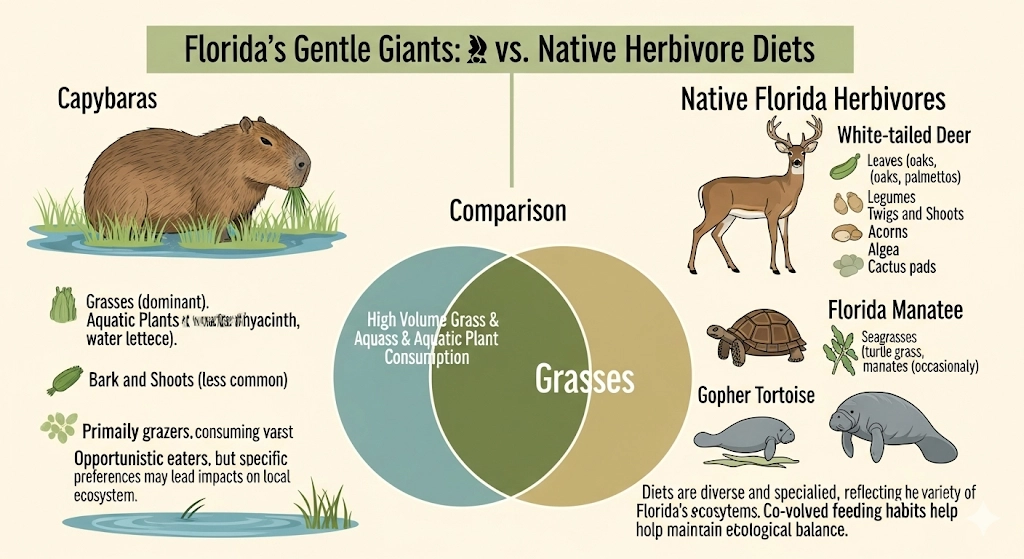
The Nuance of Non-Native Species
Not all non-native species are created equal. Some are invasive, actively harming ecosystems; others are merely non-native or have become naturalized, existing without major disruption. Assessing the ecological impact of capybaras in Florida is complex, requiring careful observation and scientific study.
Scientific Perspective: Research on non-native species in Florida shows that ecosystem effects can be subtle and gradual. While capybaras have established small populations, their long-term impact remains under study.
Potential Negative Impacts
Competition with Native Wildlife:
- Capybaras may compete with native herbivores for food, including aquatic plants and grasses.
- They could also influence habitats used by native species, such as nesting sites for birds or basking areas for reptiles.
Vegetation Changes:
- Overgrazing in localized areas can alter plant communities, potentially affecting wetland integrity.
- Their grazing habits may indirectly influence soil composition and water flow in smaller water bodies.
Disease Transmission:
- Capybaras can carry ticks, parasites, and other pathogens that might spread to native wildlife, livestock, or even pets.
- Experts emphasize monitoring as essential, though documented outbreaks in Florida remain rare.
Expert Insight:
“Capybaras are fascinating animals, but their presence in Florida’s wetlands must be monitored carefully. Any non-native species can have subtle impacts that accumulate over time,” says Dr. Maria Alvarez, a Florida wildlife ecologist.
Perceived Neutral or Positive Aspects
While evidence of direct benefits is limited, capybaras can contribute to biodiversity observation opportunities, serving as a unique draw for wildlife enthusiasts and educational programs. They may also play minor ecological roles by grazing on invasive aquatic plants, though this is anecdotal and requires further study.
Expert Q&A: Florida Wildlife Biologist on Capybara Integration
How do capybaras impact native Florida species?
What are the long-term projections for their population growth?
What is FWC’s current management strategy for wild capybaras?
Are there any known disease risks associated with wild capybaras?
The “Accidental Floridian” Case Study
Capybaras serve as a living case study in species naturalization. Small populations in areas like Gainesville and Ocala highlight the slow adaptation of non-native species to Florida’s subtropical wetlands. Lessons from other non-native introductions—like feral pigs or Burmese pythons—underscore the importance of monitoring and responsible management to prevent ecological disruption.
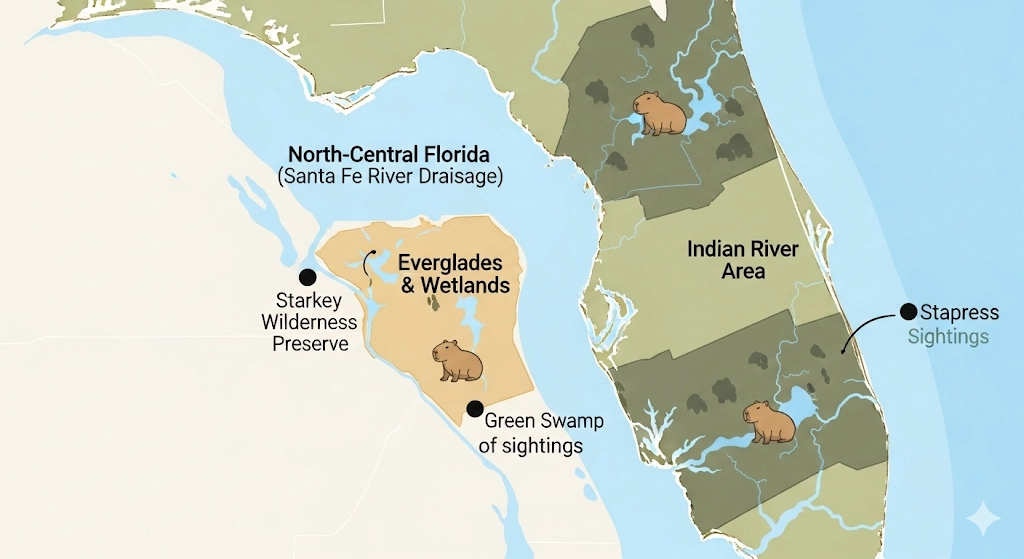
What to Do If You Encounter a Capybara (Wild or Escaped)

Prioritizing Safety: For You and the Animal
Capybaras are generally docile, but like any wild animal, they can defend themselves if threatened. To ensure both your safety and theirs:
- Always observe from a distance: Maintain at least 50–100 feet whenever possible.
- Avoid cornering or approaching mothers with young: Protective adults can become aggressive.
- Do not attempt to touch, chase, or feed them: Feeding can create dependency and increase human-wildlife conflicts.
Identifying Wild vs. Escaped Pets
Understanding the difference helps determine how to respond:
- Wild capybaras: Tend to be wary of humans and stay near water.
- Escaped pets: May approach people, appear comfortable around humans, or have collars/tags (though rare).
When and How to Report a Sighting
Reporting sightings helps the FWC monitor populations and intervene when necessary. Contact the FWC Wildlife Alert Hotline with relevant details:
- Location: GPS coordinates, cross streets, or nearby landmarks
- Time and date of sighting
- Number of animals
- Behavior observed
- Distinguishing marks or tags
Expert Tip:
Report unusual sightings, such as capybaras far from water or in urban areas, for data collection and safe management.

Capybara Sighting Checklist & Reporting Guide
Use this concise checklist to stay prepared:
- Confirm the animal is a capybara.
- Note the exact location (cross streets, landmarks, GPS coordinates).
- Record the time and date of the sighting.
- Observe behavior (grazing, swimming, resting, agitated?).
- Estimate the number of individuals.
- Take photos/videos from a safe distance if possible.
- Do NOT approach or feed the animal.
- Contact FWC Wildlife Alert: Wildlife Alert Website or call 1-888-404-3922.
Property Protection for Residents
If you live in capybara-prone areas:
- Secure your property: Install low, sturdy fencing to prevent animals from entering yards or gardens.
- Discourage loitering safely: Motion-activated sprinklers or noise deterrents may work, but never harm the animal. Consult FWC for ongoing issues.
Capybara Care: A Glimpse into Responsible Pet Ownership
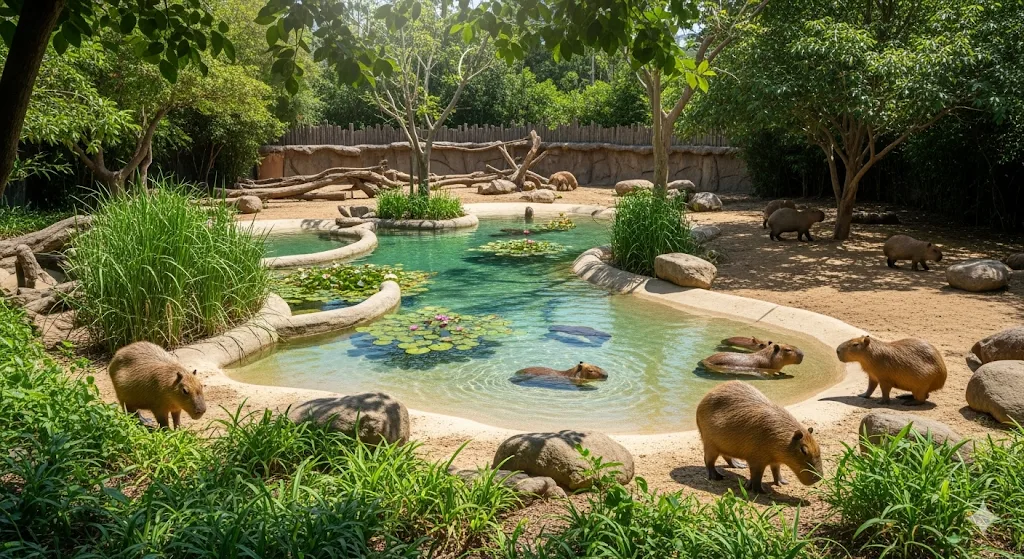
The Reality of Capybara Ownership
Capybaras are calm, gentle, and social, but they are far from “easy” pets. These semi-aquatic rodents require long-term commitment, specialized care, and significant space. Prospective owners should be prepared for a 10+ year commitment, ensuring the animal’s physical, social, and environmental needs are met.
Expert Tip:
Prepare for Long-Term Commitment. Capybaras need ample space, a water source for swimming, and a diet tailored to their digestive system. Ownership is a responsibility, not a novelty.
Essential Care Requirements
1. Housing and Environment
- Large, secure outdoor enclosure following FWC requirements
- Access to a clean, sizable body of water for swimming and natural behaviors
- Shelter from extreme sun, rain, or cold
- Safe substrate and enrichment to prevent boredom and support natural behaviors
2. Dietary Needs
- High-fiber diet including specialized capybara pellets, fresh grass, and hay
- Avoid sugary treats or inappropriate human foods that can cause health issues
3. Veterinary Care
- Regular check-ups with a veterinarian experienced in exotic animals are essential
- Common health concerns include dental problems, skin issues, and parasites
- Maintain vaccinations and preventative care as recommended
Expert Tip:
Consult Exotic Vets. Finding a veterinarian knowledgeable about capybaras is critical for maintaining their long-term health.
4. Social Needs
- Capybaras are highly social and thrive in pairs or groups, or with consistent, attentive human interaction
- Isolation can lead to stress, behavioral issues, and health problems
Sourcing a Capybara
Expert Tip:
Verify Breeder Credentials. Only purchase from reputable, licensed breeders who provide documentation, health guarantees, and guidance on care. Avoid illegal or unethical trade, which contributes to ecological and welfare problems.
Ethical Considerations for Ownership
- Is it fair to keep a capybara as a pet, given its complex social and environmental needs?
- Consider the risk of escape and potential contribution to non-native populations in Florida.
- Ensure you can meet all regulatory requirements, environmental needs, and long-term care obligations before committing.
Product Recommendation: Seek out exotic animal veterinarians specializing in rodents or large mammals for expert care.

Conclusion: Coexisting with Florida’s Remarkable Rodents
Capybaras have emerged as a surprising yet established presence in Florida’s wetlands, canals, and freshwater habitats. Their story is a blend of ecological curiosity, social fascination, and regulatory oversight. As this guide has shown:
- Wild and Non-Native Presence: Capybaras have adapted to Florida’s environment, but their ecological impact is complex and still under study.
- Regulatory Awareness: Understanding Florida Fish and Wildlife Conservation Commission (FWC) regulations is essential for anyone considering ownership or interacting with these animals.
- Responsible Observation: Observing from a safe distance, reporting unusual sightings, and never feeding wild capybaras ensures safety for both humans and animals.
- Pet Ownership Reality: Capybaras require substantial space, water access, social interaction, specialized diets, and long-term veterinary care—a significant, rewarding, but demanding commitment.
Encouraging Informed Decision-Making
Accurate information is key. By learning about capybara biology, behavior, legal responsibilities, and ecological considerations, residents and enthusiasts can replace myths and curiosity with informed, responsible actions. Respect for wildlife—native or non-native—is essential for peaceful coexistence.
From One Capybara Lover to Another:
Share this guide to promote a responsible understanding of Florida’s largest rodent. The capybara’s story in the Sunshine State is still unfolding, and staying informed is crucial. This content will be regularly updated to reflect any changes in FWC regulations, emerging scientific research, or shifts in capybara populations and sightings, ensuring readers always have accurate, authoritative guidance.
Florida’s wetlands are home to remarkable wildlife—capybaras are just one fascinating chapter. Stay curious, stay safe, and respect the natural rhythms of the ecosystem you share.

